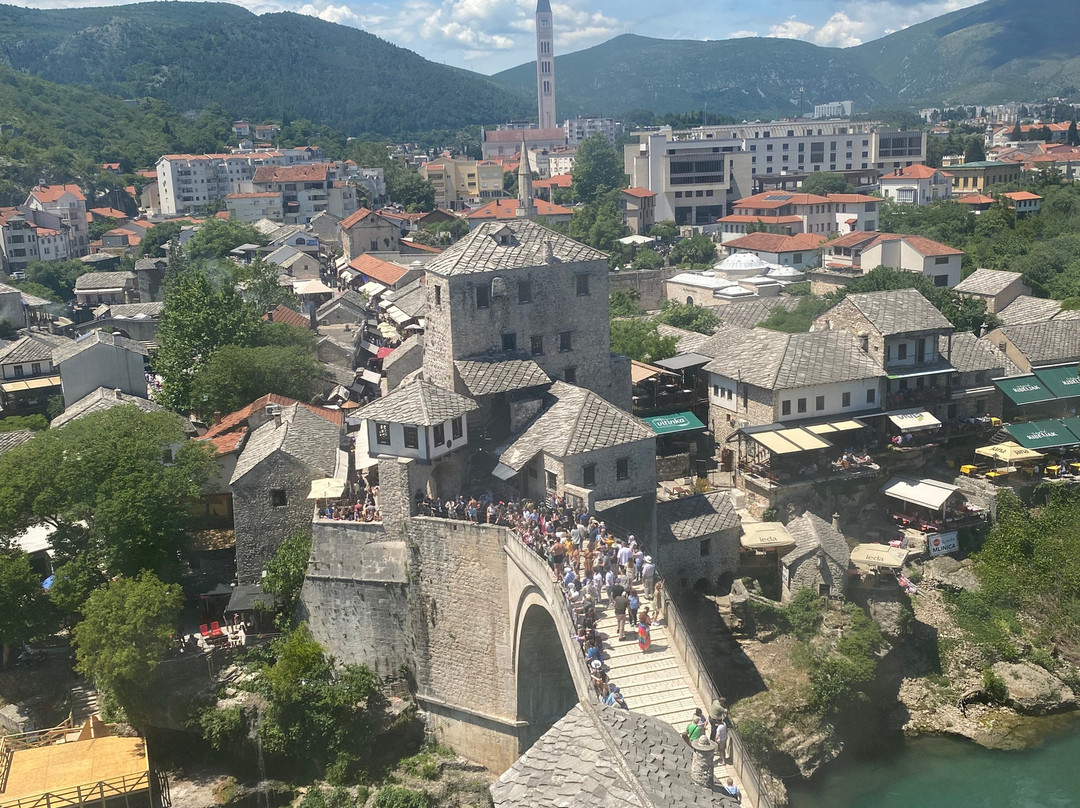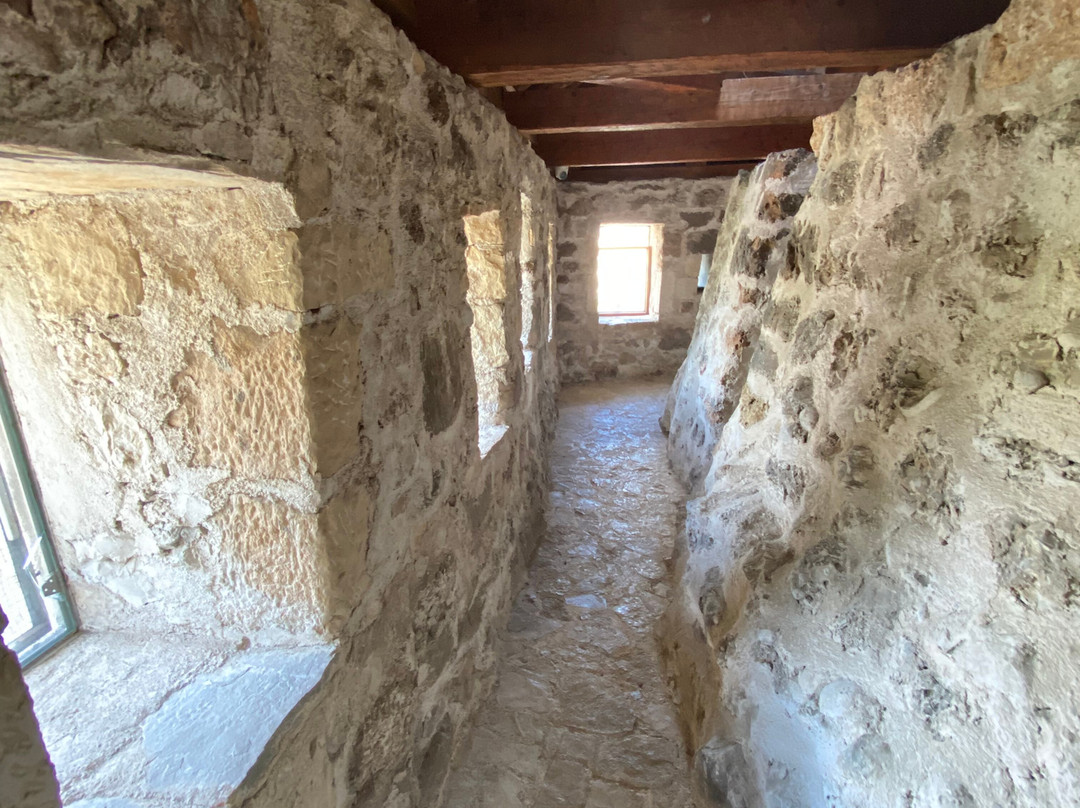的点评
Great museum - suits able-bodied visitors only
Old Bridge Museum的点评
点评:We made a destination of this museum because we were fascinated by how such a beautiful structure could have been designed, let alone constructed across the Nerevta River back in the 1500s. The main part of the museum takes the visitor up some very steep staircases (almost ladders!) up four or five floors of a tower, with display boards explaining the history of the bridge and the construction techniques. At the very top floor is a neat 360-degree walk around the top of the tower with views across the city and beyond, in all directions. Upon exiting the tower, visitors are invited to continue the tour next door, descending into the bowels of the bridge foundations where one can see the foundations of an original bridge, even prior to the 'original' version built in the 16th century. There is a further extensive display of artwork explaining the reconstruction after the bombing in November 1993 - the new bridge building was re-opened in July 2004. As far as we could tell, neither the tower nor the continued exhibition below ground, would be suitable for anyone with physical disabilities.
翻译:我们之所以选择这座博物馆,是因为我们惊叹于如此美丽的建筑是如何被设计出来的,更不用说它竟然在16世纪就横跨涅列夫塔河。博物馆的主体部分引导游客沿着一段非常陡峭的楼梯(几乎是梯子!)爬上四五层塔楼,塔楼上的展板讲解着这座桥的历史和建造技术。在塔顶,有一条360度的环塔步道,可以俯瞰城市及更远方的各个方向。走出塔楼后,游客可以继续参观隔壁的桥梁,下到桥基内部,在那里可以看到一座原始桥梁的基座,甚至比16世纪建造的“原版”桥梁还要早。还有大量的艺术品展览,解释了 1993 年 11 月轰炸后的重建情况——新桥楼于 2004 年 7 月重新开放。据我们所知,无论是塔楼还是地下的持续展览,都不适合任何身体残疾的人。




此点评仅代表旅行者个人的主观意见,并不代表TripAdvisor以及其合作方的意见。
关于我们
|
新闻动态
|
商务合作
|
会员中心
|
业主中心
|
业主通
|
常见问题
|
意见反馈
|
联系我们
|
营业执照
© 2025 Tripadvisor 版权所有。
使用条款 |隐私政策 |网站工作原理
部分照片由 VFM Leonardo 提供。
* Tripadvisor不是旅行社,也不是旅游预订服务代理商。我们提供免费、客观、公正的旅游资讯服务。 (显示更多)
TripAdvisor LLC 既不是预订代理商,也不是旅游运营商,不会向网站用户收取任何服务费。 按照规定,在 Tripadvisor 发布机票价格、游览和旅行套餐的合作伙伴(航空公司、旅行提供商及预订代理商),其标价须包含所有费用和附加费用。 例如, 机场出入境税费、消费税与其他服务费、手续费、杂费及附加费用。 当您向我们的某个合作伙伴进行预订时,请务必查阅他们的网站以了解当地行政部门要求的所有适用费用的具体情况。 除非另有说明,机票价格通常指的是一个人的价格(以人民币计)。
为方便起见,TripAdvisor LLC 根据从我们的预订合作伙伴获取的空房率计算每个酒店的均价。 对于游览和景点来说,所显示价格通常是每位成人的最低可用价格。 对于列出的任何旅行套餐或优惠,TripAdvisor LLC 无法保证任何特定的费率或价格。 此外,酒店均价每晚会更新,并以您的首选币种表示(使用现行汇率)。 由于这些已换算的价格是预估价格,因此,有关具体金额和币种请与预订网站进行核实。
此外,TripAdvisor LLC 无法保证我们网站上宣传的价格随时有效。 标价可能需要预订一定天数才能生效,或有不可用日期、使用条件或限制。
TripAdvisor公司对外部网站的内容一概不负责。优惠价格中不含税和其他费用。
ICP证:沪B2-20200433
沪ICP备20013175号
 沪公网安备31010502005427号
沪公网安备31010502005427号鹰程信息技术(上海)有限公司
货币/国家及地区
¥CNY
中国

